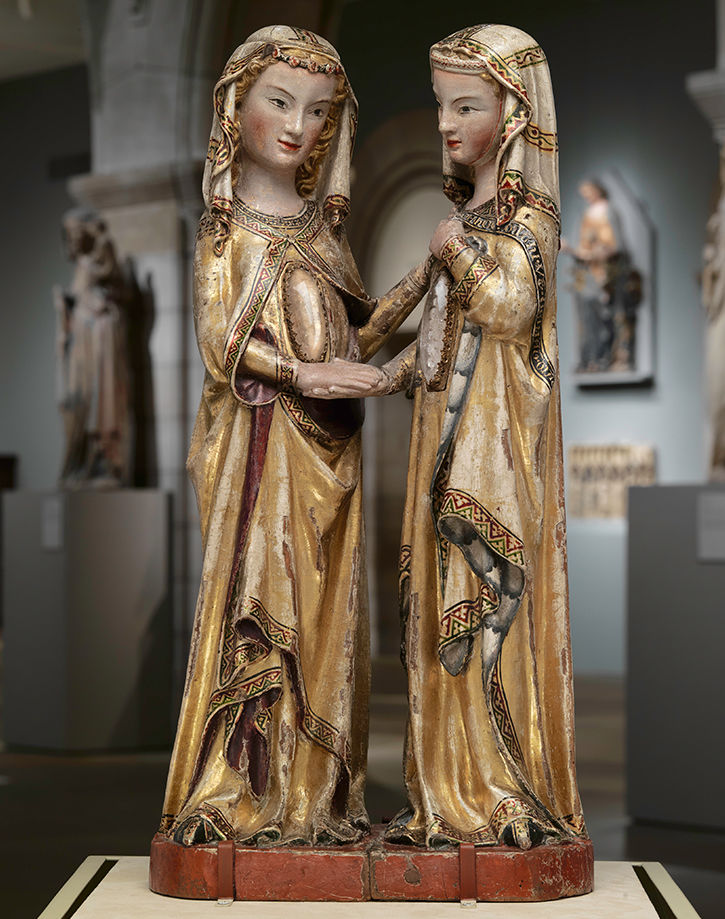The Visitation

Master Heinrich of Constance (German, active in Constance, ca. 1300). The Visitation, ca. 1310–20. Walnut, paint, gilding, rock-crystal cabochons inset in gilt-silver mounts. The Metropolitan Museum of Art, New York, Gift of J. Pierpont Morgan, 1917 (17.190.724).
This sculpture represents a joyous encounter between two holy women, who are connected through their gestures. The Virgin Mary tenderly places her hand on the shoulder of her cousin Elizabeth, who raises her arm to her breast to declare, "Who am I, that the mother of the Lord should visit me?" (Luke 1:43). Soon after Mary learned of her miraculous conception of Jesus, she traveled to see Elizabeth, who was also expecting a child, the future John the Baptist. Carved in walnut, the figures are each inset with crystal-covered cavities, which may have originally held images of their infants. Created for a female audience, this is one of many splendid works of art from the Dominican convent of St. Katherinenthal. The original paint and gilding are almost completely preserved.
"There's almost a little pause that you see between the two hands."
—Melanie Holcomb, curator
"The system for touch and the system for vision interact in the brain and reinforce each other."
—Eric Kandel, neuroscientist
"For the medieval audience, the two rock crystals are the most important element of the image."
—Peter Barnet, curator
All voices: Melanie Holcomb, curator; Peter Barnet, curator; Eric Kandel, neuroscientist
Transcript: Four Hands, Many Meanings (Video)